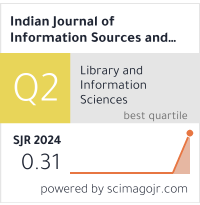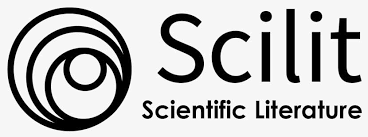An Investigation of Fluid Flow Simulation in Bioprinting Inkjet Nozzles Based on Internet of Things
DOI:
https://doi.org/10.51983/ijiss-2023.13.2.3845Keywords:
Bioink, Silk, PCL, Egg Shell Membrane, Fluid Flow, COMSOLAbstract
In the realm of 3D bioprinting, the ultimate objective is the creation of functional tissue constructs, achieved through precise control of inkjet performance and the ideal bioink composition. While the experimental standardization of these attributes can be time-consuming, their comprehension is facilitated through simulation analysis. In this paper, we use COMSOL Multiphysics to compare the rheological behaviour of three different bioprinting-friendly fluids: pure silk, silk mixed with PCL, and silk-PCL mixed with eggshell membrane. Our analysis focuses on the fluid flow dynamics in an air medium at various time intervals, specifically assessing the magnitude of velocity in each scenario. By considering both velocity and the uniformity of fluid dispersion throughout the inkjet process, we aim to identify the most advantageous fluid combination and optimal time interval for bioink applications. The transmission of this real-time data to a centralized Internet of Things (IoT) platform might facilitate the ability of researchers to remotely assess and visually represent the efficacy of various fluid combinations during the printing procedure.
References
Montero, F. E., Rezende, R. A., da Silva, J. V. L., & Sabino, M. A. (2019). Development of a Smart Bioink for Bioprinting Applications. Frontiers of Mechanical Engineering, 5, 56.
Albertson, M. L., Dai, Y. B., Jensen, R. A., & Rouse, H. (1950). Diffusion of submerged jets. Transactions of the American Society of Civil Engineers, 115(1), 639-664.
Allain, L. R., Stratis-Cullum, D. N., & Vo-Dinh, T. (2004). Investigation of microfabrication of biological sample arrays using piezoelectric and Bubble-jet printing technologies. Analytica Chimica Acta, 518(1), 77-85.
Gohl, J., Markstedt, K., Mark, A., Hakansson, K., Gatenholm, P., & Edelvik, F. (2018). Simulations of 3D bioprinting: predicting bioprintability of nanofibrillar inks. Biofabrication, 10, 034105.
Kang, H. W., Yoo, J. J., & Atala, A. (2015). Bioprinted Scaffolds for Cartilage Tissue Engineering. Methods in Molecular Biology, 1340, 161-169.
Cui, X., Boland, T., D’Lima, D. D., & Lotz, M. K. (2012). Thermal inkjet printing in tissue engineering and regenerative medicine. Recent Patents on Drug Delivery and Formulations, 6(2), 149-155.
Lee, M., & Wu, B. M. (2012). Recent advances in 3D printing of tissue engineering scaffolds. Methods in Molecular Biology, 868, 257-267.
Kundu, J., Shim, J. H., Jang, J., Kim, S. W., & Cho, D. W. (2013). An additive manufacturing based PCL-alginate-chondrocyte bioprinted scaffold for cartilage tissue engineering. Journal of Tissue Engineering and Regenerative Medicine, 9(11), 1286-1297.
Shera, S. S., Rathindra, N. K., & Banik, M. (2019). Silk and silk fibroin-based biopolymeric composites and their biomedical applications. Materials for Biomedical Engineering: Biopolymer Fibers, 11, 339-374.
Wang, Q., Han, G., Yan, S., & Zhang, Q. (2019). 3D Printing of Silk Fibroin for Biomedical Applications. Materials, 12, 504.
Varkey, A., Venugopal, E., Sugumaran, P., Pillai, M. M., Rajendran, S., & Bhattacharyya, A. (2015). Impact of silk fibroin-based scaffold structures on human osteoblast MG63 cell attachment and proliferation. International Journal of Nanomedicine, 10, 43-51.
Gloria, A. (2013). Survey of Wild Silkmoth Populations in Three Ecological Zones and Evaluation of the Performance of Bobyx Mori. University of Ghana Digital Collections.
Zheng, Z., Wu, J., Liu, M., Wang, H., Li, C., Rodriguez, M. J., ... & Zheng, Z. (2017). 3D Bioprinting of Self-Standing Silk-Based Bioink. Advances in Healthcare Material, 1701026.
Taddei, P., Chiono, V., Anghileri, A., Vozzi, G., Freddi, G., & Ciardelli, G. (2013). Silk Fibroin/ Gelatin Blend Films Cross-linked with Enzymes for Biomedical Applications. Macromolecular Bioscience, 13(11), 1492-1510.
Rodriguez, M. J., Brown, J., Giordano, J., Lin, S. J., Omenetto, F. G., & Kaplan, D. L. (2014). Silk based bioinks for soft tissue reconstruction using 3-dimensional (3D) printing with in vitro and in vivo assessments. Biomaterials, 117, 105-115.
Liu, Y., Ling, S., Wang, S., Chen, X., & Shao, Z. (2017). Thixotropic silk nanofibril-based hydrogel with extracellular matrix-like structure. Biomaterials Science, 2, 1338-1342.
Panwar, A., & Tan, L. P. (2016). Current Status of Bioinks for Micro-Extrusion-Based 3D Bioprinting. Molecules, 21(6), 685.
Freeman, F. E., & Kelly, D. J. (2017). Tuning Alginate Bioink Stiffness and Composition for Controlled Growth Factor Delivery and to Spatially Direct MSC Fate within Bioprinted Tissues. Scientific Reports, 7, 17042.
Lammel, A. S., Hu, X., Park, S. H., Kaplan, D. L., & Scheibel, T. R. (2010). Controlling silk fibroin particle features for drug delivery. Biomaterials, 31(16), 4583-4591.
Das, S., Pati, F., Choi, Y. J., Rijal, G., Shim, J. H., Kim, S., & Ghosh, W. (2015). Bioprintable, cell-laden silk fibroin-gelatine hydrogel supporting multilineage differentiation of stem cells for fabrication of three-dimensional tissue constructs. Acta Biomaterialia, 11, 233-246.
Gungor-Ozkerim, P. S., Inci, I., Zhang, Y. S., Khademhosseini, A., & Dokmeci, M. R. (2018). Bioinks for 3D bioprinting: an overview. Biomaterials Science, 6(5), 915-946.
Derakhshanfar, S., Mbeleck, R., Xu, K., Zhang, X., Zhong, W., & Xing, M. (2018). 3D bioprinting for biomedical devices and tissue engineering: A review of recent trends and advances. Bioactive Materials, 3(2), 144-156.
Buratti, C., Ström, E., Feltrin, L., Clavier L., Gardasevic, Blazek T., et al. (2021). IoT protocols, architectures, and applications. Inclusive Radio Communications for 5G and Beyond, 187-220.
Downloads
Published
How to Cite
Issue
Section
License
Copyright (c) 2023 The Research Publication

This work is licensed under a Creative Commons Attribution-NonCommercial-NoDerivatives 4.0 International License.









